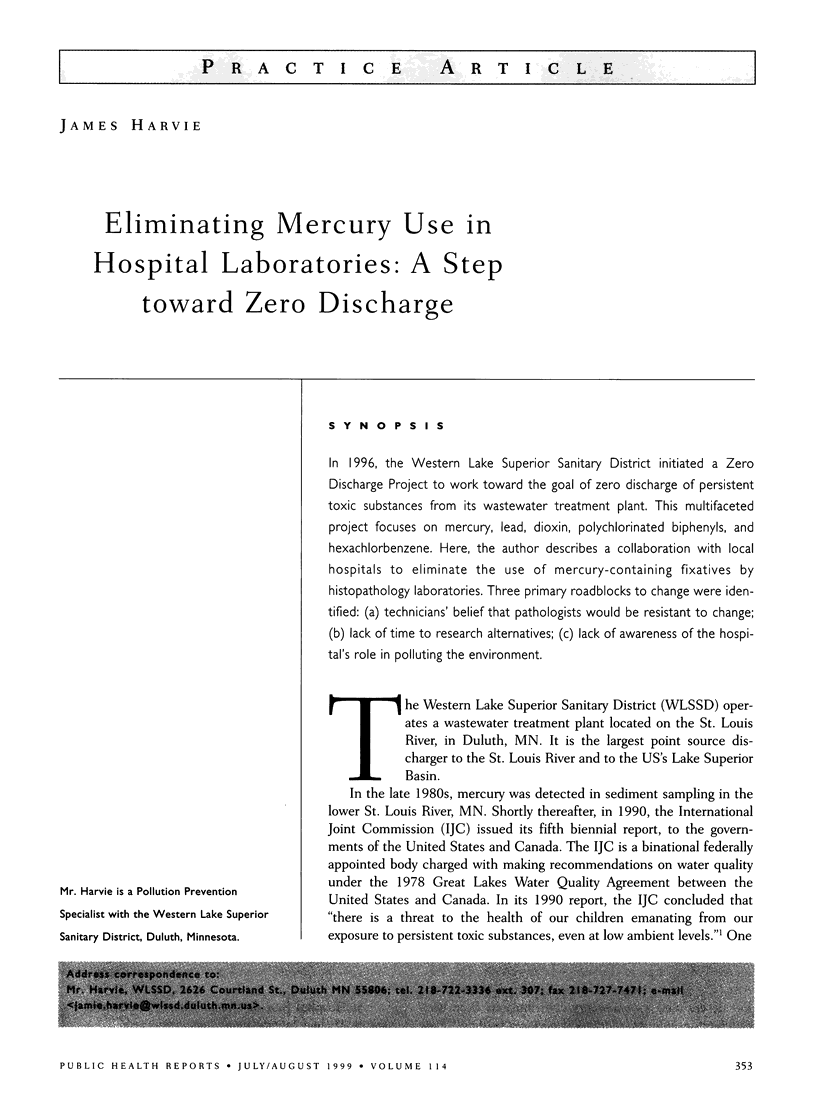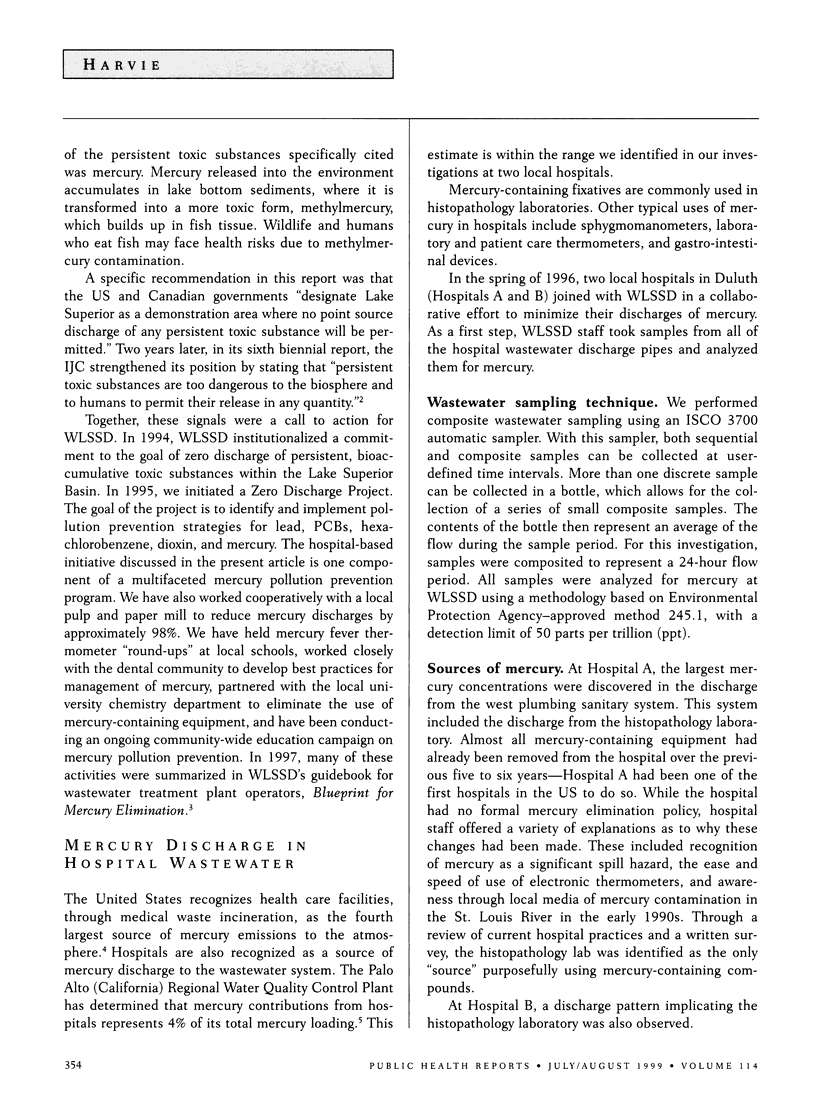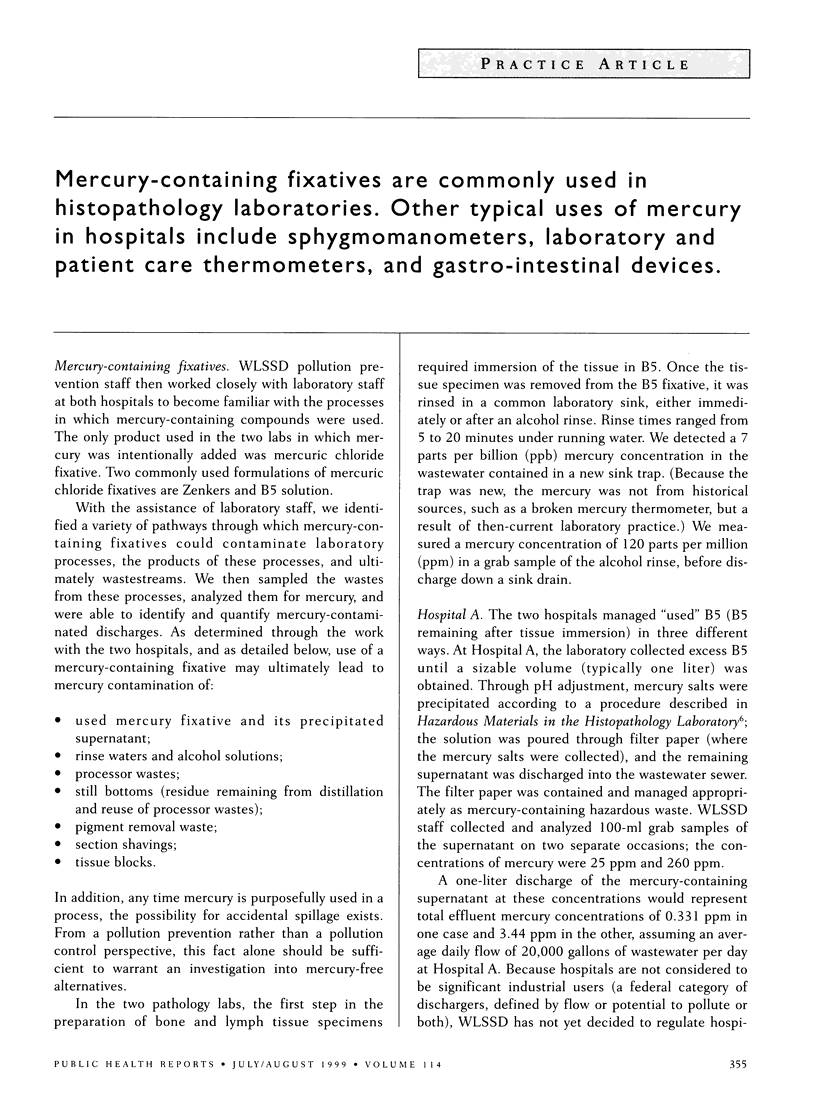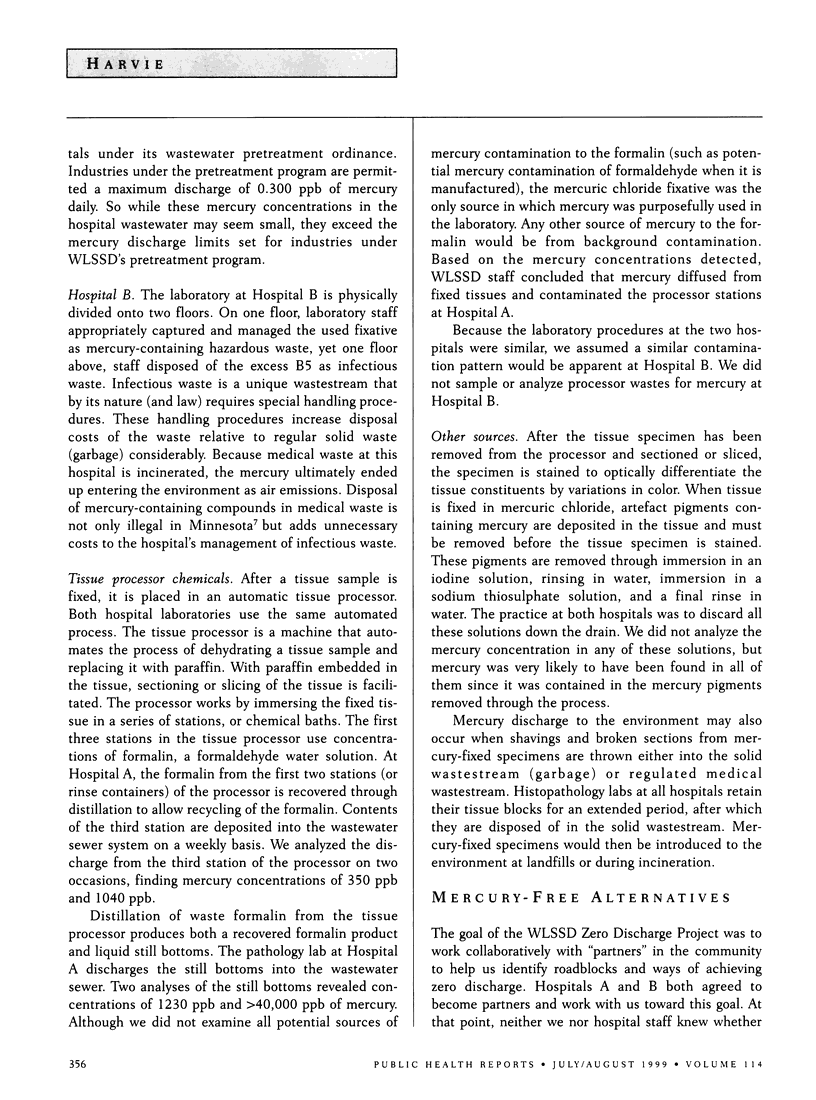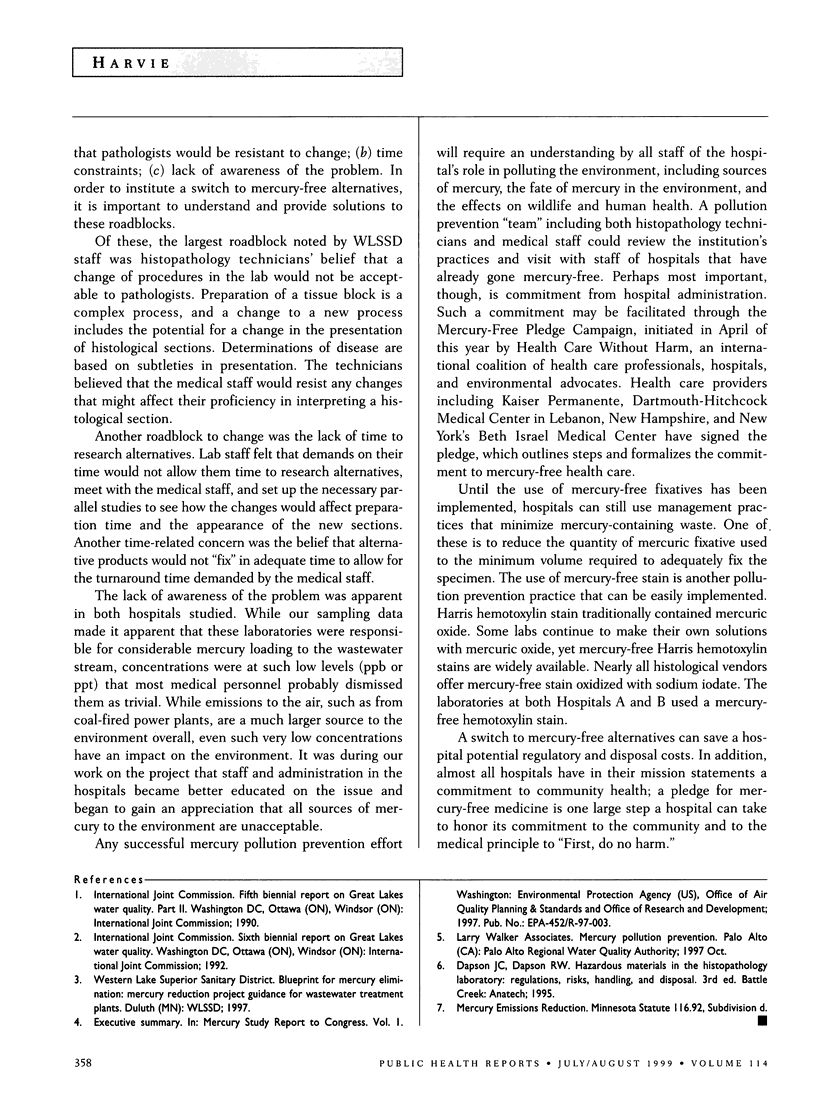Abstract
In 1996, the Western Lake Superior Sanitary District initiated a Zero Discharge Project to work toward the goal of zero discharge of persistent toxic substances from its wastewater treatment plant. This multifaceted project focuses on mercury, lead, dioxin, polychlorinated biphenyls, and hexachlorbenzene. Here, the author describes a collaboration with local hospitals to eliminate the use of mercury-containing fixatives by histopathology laboratories. Three primary roadblocks to change were identified: (a) technicians' belief that pathologists would be resistant to change; (b) lack of time to research alternatives; (c) lack of awareness of the hospital's role in polluting the environment.
Full text
PDF